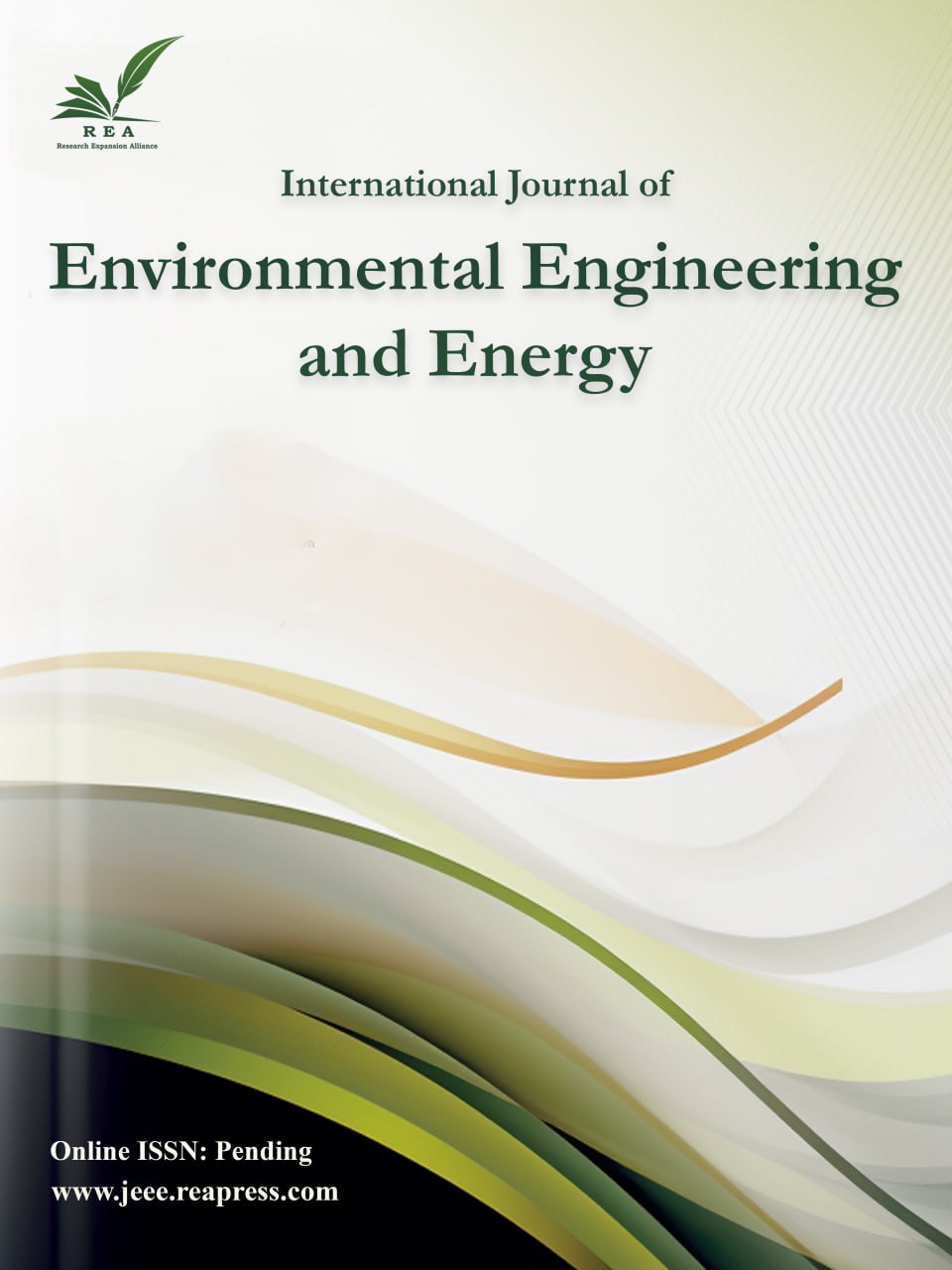Energy Generation in Nigeria: A Literature Review
Abstract
Petroleum accounts for almost the total energy used in the transportation sector by, 90% in 2005, and is expected to also be on the increase to 92% by 2030 as a result of the difficulty in petroleum alternatives. In China and the United States, gas demand is on the high side. The ever-expanding energy demand, decreasing sources of petroleum resources, and worry about contamination levels in the earth have been the significant worries of the world. The Consumption of Energy patterns across the globe today imply that our great nation, Nigeria and most African nations have the least consumption of energy. Nigeria is suffering from an insufficient supply of consumable energy as a result of a lack of persistent government intervention regularly and an increased population. This study explored the sources of energy in Nigeria through a literature review. Finally, emphasis was laid on waste energy.
Keywords:
Energy, Energy generation, Energy consumption, Waste energyReferences
- [1] [1] Colgan, J. D. (2009). The international energy agency. Challenges for the 21st century. gppi energy policy paper, 6(6), 1–20. https://www.files.ethz.ch/isn/109115/GPPiPP6_IEA_final.pdf
- [2] [2] Adeniran, A. O., Muraina, M. J., & Ngonadi, J. C. (2023). Energy consumption for transportation in sub-saharan Africa. In Achieving net zero (Vol. 20, pp. 203–231). Emerald Publishing Limited. https://www.emerald.com/insight/content/doi/10.1108/S2043-052320230000020009
- [3] [3] Famuyide, O. O., Anamayi, S. E., & Usman, J. M. (2011). Energy resources’ pricing policy and its implications on forestry and environmental policy implementation in Nigeria. Continental j sustainable development, 2, 1–7. https://www.academia.edu/download/4153534/Vol_2_-_Cont._J._Sust._Dev..pdf_1-7n.pdf
- [4] [4] Abiodun, R. (2003). Fuel price hike spells doom for Nigeria’s forest. Available at htt: www. islamonline. net/english/index. shtml.
- [5] [5] Williams, C. E. (1998). Reaching the african female farmers with innovative extension approaches: success and challenges for the future [presentation]. International workshop on women agricultural intensification and household food security at university of cape coast, ghana, 25th-28th june (p. 600).
- [6] [6] Komolafe, O. M., & Udofia, K. M. (2020). Review of electrical energy losses in Nigeria. Nigerian journal of technology, 39(1), 246–254. https://www.ajol.info/index.php/njt/article/view/194123
- [7] [7] Karekezi, S., & Ranja, T. (1997). Renewable energy technologies in Africa.
- [8] [8] Aliyu, A. K., Modu, B., & Tan, C. W. (2018). A review of renewable energy development in Africa: a focus in south africa, egypt and Nigeria. Renewable and sustainable energy reviews, 81, 2502–2518. DOI:10.1016/j.rser.2017.06.055
- [9] [9] Akhator, E. P., Obanor, A. I., & Ezemonye, L. I. (2016). Electricity generation in Nigeria from municipal solid waste using the swedish wasteto-energy model. Journal of applied sciences and environmental management, 20(3), 635–643. https://www.ajol.info/index.php/jasem/article/view/147058
- [10] [10] Famuyide, O. O., & Adu, A. O. (2004). Socio-economic impacts of deforestation in the sudano-sahelian belt of Nigeria. Journal of forestry research and management, 1(1–2), 94–106.
- [11] [11] Adhekpukoli, E. (2018). The democratization of electricity in Nigeria. The electricity journal, 31(2), 1–6. DOI:10.1016/j.tej.2018.02.007
- [12] [12] Ohajianya, A. C., Abumere, O. E., Owate, I. O., & Osarolube, E. (2014). Erratic power supply in Nigeria: causes and solutions. International journal of engineering science invention, 3(7), 51–55. https://www.researchgate.net/profile/Anthony-Ohajianya/publication/318685479_Erratic_Power_Supply_In_Nigeria_Causes_And_Solutions/links/5977ba450f7e9b277721cf33/Erratic-Power-Supply-In-Nigeria-Causes-And-Solutions.pdf
- [13] [13] Esiedesa, O. (2020). Post privatization: Nigeria stranded power rises 263% to 3,742 MW". vanguard news Nigeria. https://www.vanguardngr.com/2021/01/post-privatisation-nigerias-stranded-power-rises-263-to3742mw/
- [14] [14] Adenikinju, A. (2005). Analysis of the cost of infrastructure failures in a developing economy: the case of the electricity sector in Nigeria. African economic research consortium.
- [15] [15] Iwayemi, A. (2008). Nigeria’s dual energy problems: policy issues and challenges. International association for energy economics, 53(1), 17–21.
- [16] [16] Sriram, N., & Shahidehpour, M. (2005). Renewable biomass energy. IEEE power engineering society general meeting, 2005 (pp. 612–617). IEEE. https://ieeexplore.ieee.org/abstract/document/1489459/
- [17] [17] Messerli, P., Murniningtyas, E., Eloundou-Enyegue, P., Foli, E. G., Furman, E., Glassman, A., … Moatti, J. P. (2019). Global sustainable development report 2019: the future is now–science for achieving sustainable development. United Nations.
- [18] [18] Allen, S. A. A., Ree, A. G., Ayodeji, S. A. M., & Deborah, S. A. E. (2016). Lignocelluloses: an economical and ecological resource for bio-ethanol production-a review. Management, 1(3), 128–144. https://www.academia.edu/download/104613576/SOKAN_PUBLICATION_LIGNO_new_10.11648.j.ijnrem.20160103.18.pdf
- [19] [19] Perlack, R. D. (2005). Biomass as feedstock for a bioenergy and bioproducts industry: the technical feasibility of a billion-ton annual supply. Oak ridge national laboratory.
- [20] [20] Ferronato, N., & Torretta, V. (2019). Waste mismanagement in developing countries: a review of global issues. International journal of environmental research and public health, 16(6), 1060. https://www.mdpi.com/1660-4601/16/6/1060
- [21] [21] Amuda, O. S., Adebisi, S. A., Jimoda, L. A., & Alade, A. O. (2014). Challenges and possible panacea to the municipal solid wastes management in Nigeria. Journal of sustainable development studies, 6(1). https://scienta.asia/index.php/jsds/article/view/644
- [22] [22] Ezechi, E. H., Nwabuko, C. G., Enyinnaya, O. C., & Babington, C. J. (2017). Municipal solid waste management in Aba, Nigeria: Challenges and prospects. Environmental engineering research, 22(3), 231–236. https://koreascience.kr/article/JAKO201730048507852.page
- [23] [23] Arowolo, A. O., Deng, X., Olatunji, O. A., & Obayelu, A. E. (2018). Assessing changes in the value of ecosystem services in response to land-use/land-cover dynamics in Nigeria. Science of the total environment, 636, 597–609. DOI:10.1016/j.scitotenv.2018.04.277
- [24] [24] Ayuba, K. A., Manaf, L. A., Sabrina, A. H., & Azmin, S. W. N. (2013). Current status of municipal solid waste management practise in FCT Abuja. Research journal of environmental and earth sciences, 5(6), 295–304. https://pdfs.semanticscholar.org/4d71/74d1f056a2103ea696073780f67093417763.pdf
- [25] [25] Yusuf, R. O., Adeniran, J. A., Mustapha, S. I., & Sonibare, J. A. (2019). Energy recovery from municipal solid waste in Nigeria and its economic and environmental implications. Environmental quality management, 28(3), 33–43. https://onlinelibrary.wiley.com/doi/abs/10.1002/tqem.21617
- [26] [26] Bakare, W. (2016). Solid waste management in Nigeria. BioEnergy consult, powering clean energy future. https://www.bioenergyconsult.com/tag/nigeria/
- [27] [27] Abila, B., & Kantola, J. (2013). Municipal solid waste management problems in Nigeria: evolving knowledge management solution. International journal of environmental and ecological engineering, 7(6), 303–308. https://www.academia.edu/download/81930828/4713.pdf
- [28] [28] Oloruntade, A. J., P. A. Adeoye, P. A., & F. Alao, F. (2013). Municipal solid waste collection and management strategies in akure, south-western Nigeria. Caspian journal of environmental sciences, 11(1), 1–10. https://cjes.guilan.ac.ir/article_1111.html
- [29] [29] David, V. E., Wenchaoa, J., Johna, Y., & Mmerekib, D. (2019). Solid waste management in Monrovia, Liberia: Implications for sustainable development. The journal of solid waste technology and management, 45(1), 102–110. https://www.ingentaconnect.com/content/jswt/jswt/2019/00000045/00000001/art00010
- [30] [30] Xu, Y., Yang, K., Zhou, J., & Zhao, G. (2020). Coal-biomass co-firing power generation technology: current status, challenges and policy implications. Sustainability, 12(9), 3692. https://www.mdpi.com/2071-1050/12/9/3692
- [31] [31] Bai, Z., Liu, Q., Lei, J., Li, H., & Jin, H. (2015). A polygeneration system for the methanol production and the power generation with the solar–biomass thermal gasification. Energy conversion and management, 102, 190–201. DOI:10.1016/j.enconman.2015.02.031
- [32] [32] Zaman, C. Z., Pal, K., Yehye, W. A., Sagadevan, S., Shah, S. T., Adebisi, G. A., … Johan, R. Bin. (2017). Pyrolysis: a sustainable way to generate energy from waste. Pyrolysis, 1, 3–36. https://books.google.com/books?
- [33] [33] Portha, J. F., Parkhomenko, K., Kobl, K., Roger, A. C., Arab, S., Commenge, J. M., & Falk, L. (2017). Kinetics of methanol synthesis from carbon dioxide hydrogenation over copper–zinc oxide catalysts. Industrial & engineering chemistry research, 56(45), 13133–13145. https://pubs.acs.org/doi/abs/10.1021/acs.iecr.7b01323
- [34] [34] Roos, C. J. (2010). Clean heat and power using biomass gasification for industrial and agricultural projects. Northwest CHP Application Center Olympia, WA, USA.
- [35] [35] Molino, A., Chianese, S., & Musmarra, D. (2016). Biomass gasification technology: the state of the art overview. Journal of energy chemistry, 25(1), 10–25. DOI:10.1016/j.jechem.2015.11.005
- [36] [36] Zhang, J., Weng, X., Han, Y., Li, W., Gan, Z., & Gu, J. (2013). Effect of supercritical water on the stability and activity of alkaline carbonate catalysts in coal gasification. Journal of energy chemistry, 22(3), 459–467. DOI:10.1016/S2095-4956(13)60060-1
- [37] [37] Shen, D., Xiao, R., Gu, S., & Luo, K. (2011). The pyrolytic behavior of cellulose in lignocellulosic biomass: a review. RSC advances, 1(9), 1641–1660. https://pubs.rsc.org/en/content/articlehtml/2011/ra/c1ra00534k
- [38] [38] Akia, M., Yazdani, F., Motaee, E., Han, D., & Arandiyan, H. (2014). A review on conversion of biomass to biofuel by nanocatalysts. Biofuel research journal, 1(1), 16–25. https://www.biofueljournal.com/?_action=articleInfo&article=4747&vol=542
- [39] [39] Rahimpour, M. R., Arab Aboosadi, Z., & Jahanmiri, A. H. (2012). Synthesis gas production in a novel hydrogen and oxygen perm-selective membranes tri-reformer for methanol production. Journal of natural gas science and engineering, 9, 149–159. DOI:10.1016/j.jngse.2012.06.007
- [40] [40] Opaluwa, E. (2019). Waste to Energy: Killing two birds with one stone. Energy and Environment. https://www.amazon.com/?_encoding=UTF8&tag=mntzr-20&linkCode=ur2&linkId=fbdfb9b1ea167046640ea9a6800add6e&camp=1789&creative=9325&subId=M7445782126433140803


